Wherever they turn, the nearly 60,000 residents of Wilmington, Los Angeles cannot escape signs that the local industry takes precedence over their state of well-being. Here, cargo trucks roll down residential streets day and night amid stacks of shipping containers and gantry cranes, and the airborne pollution from smokestacks and freight ships loom on the horizon of the low-rise South Bay neighborhood. In the “Heart of the Harbor,” one out of five residents lives below the national poverty line. The harbor in question, which lies just a mile south of L.A.’s commercial center, is the busiest container port in North America and the ninth busiest in the world.
Earlier this month, nine acres of underused property, owned by the Port of Los Angeles and guarded by a chain link fence, were officially transferred to the people in an opening ceremony for the Wilmington Waterfront Promenade. The $77.3 million park will span 1,300 linear feet designed collaboratively by the Los Angeles office of Sasaki and landscape architecture firm Studio MLA. The promenade is the latest product of the Port of Los Angeles Public Access Investment Plan (PAIP), an effort to shift its attention from the harbor to its surrounding communities by applying a minimum of 10 percent of the Port’s annual operating income to the construction, maintenance, and programming of waterfront property in its possession.
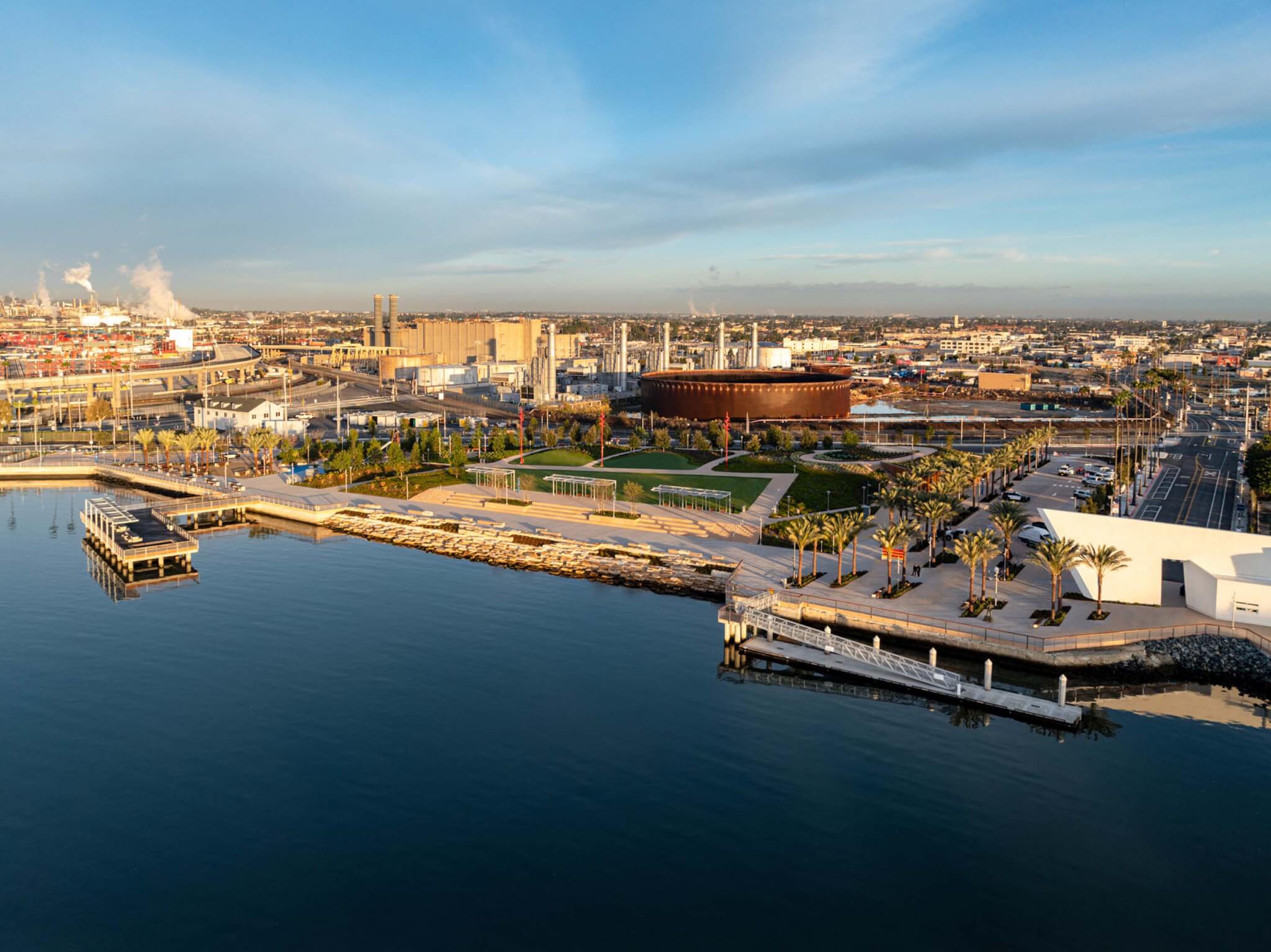
The sizable budget paid for the reengineering of the bulkhead along the waterfront, the high-quality materials, and the planting of hundreds of mature trees is set to transform the promenade. “The goal is to get the residents to interact with the water in a variety of ways,” Benjamin Boisclair, senior associate landscape architect at Sasaki’s Los Angeles office, told AN. “The design stems from the natural landscape in the immediate area—the bluff and waterfront landscape—and the generation of multiple experiences.”
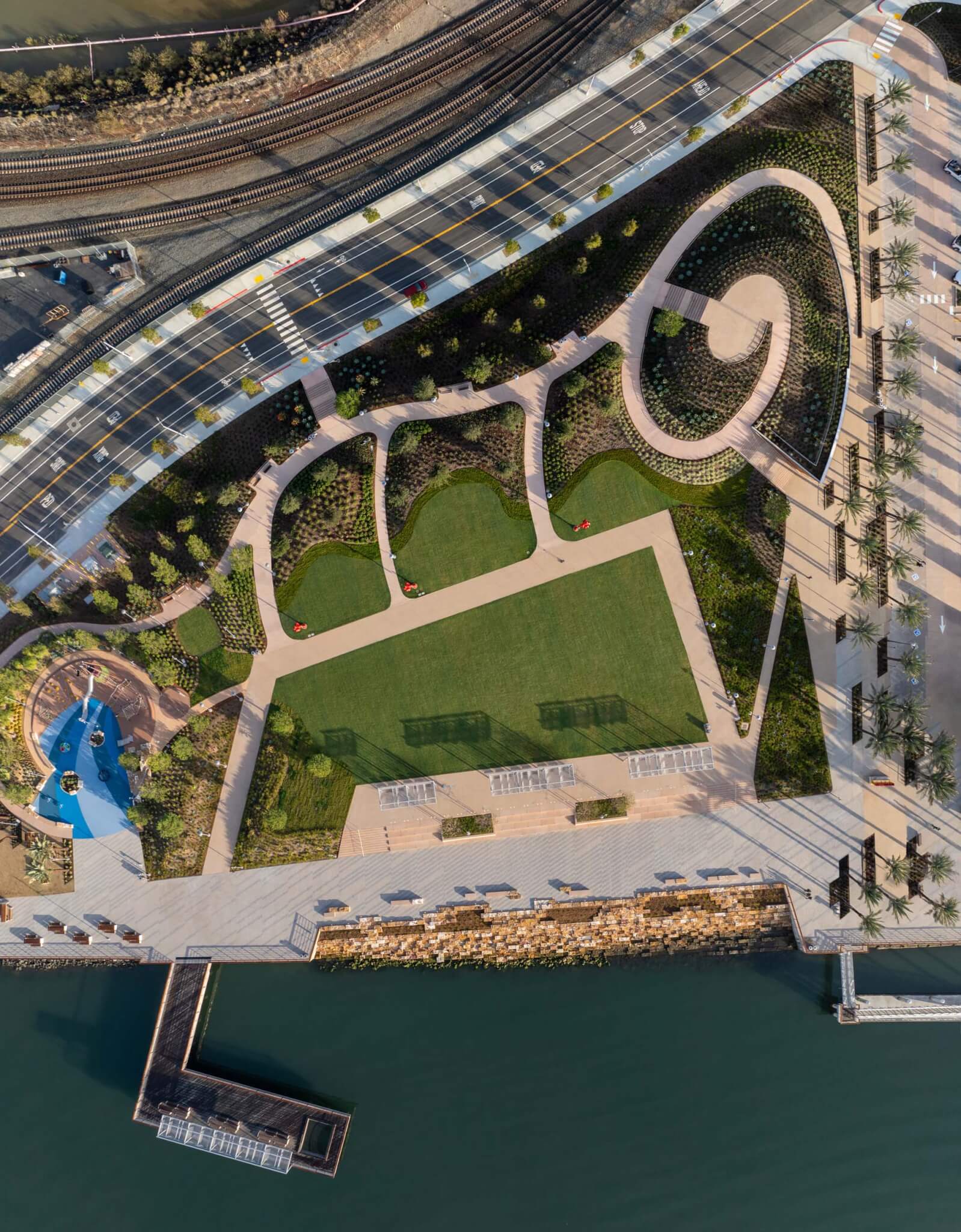
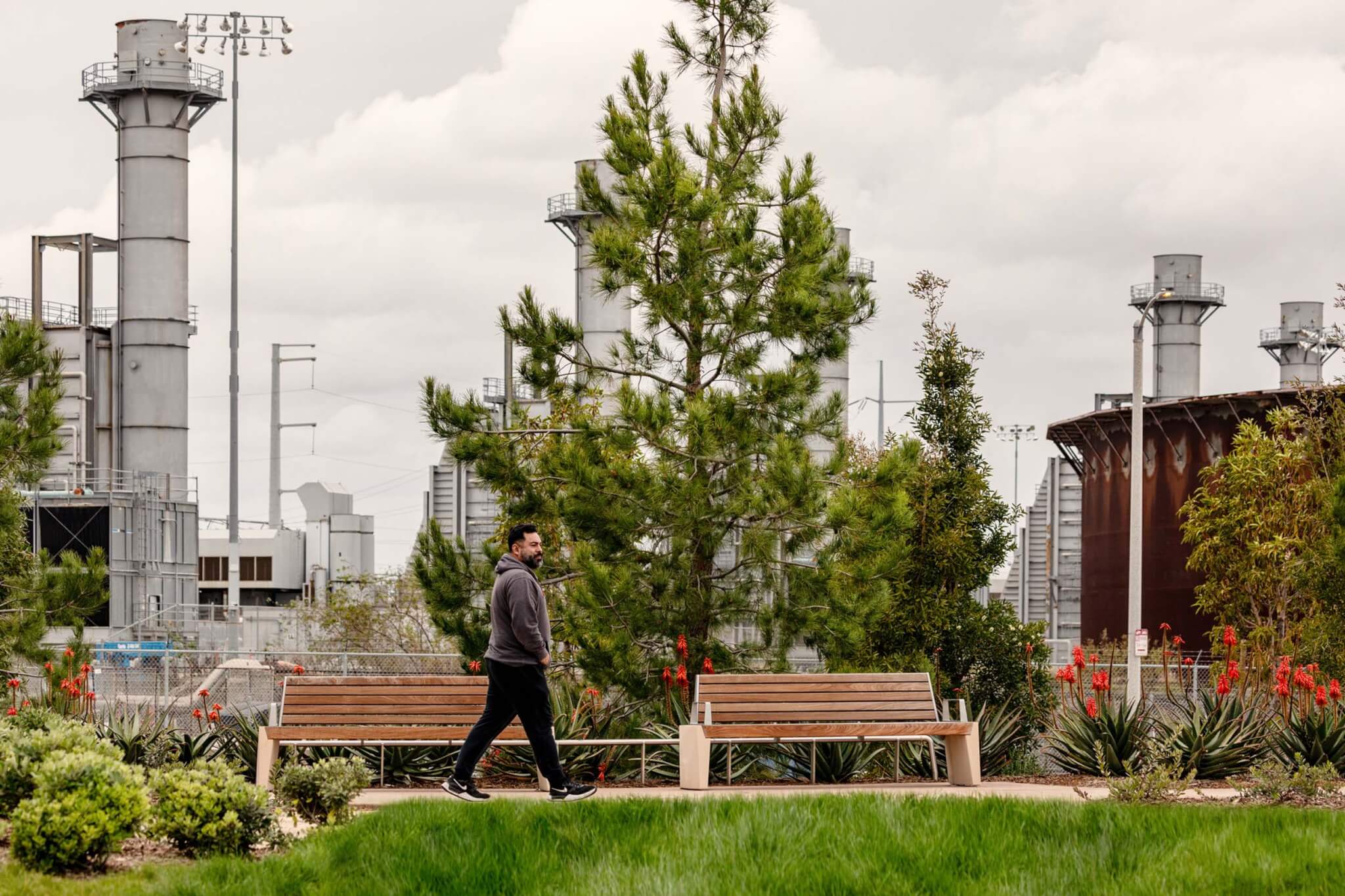
The highest point of the park, known as the landing (a nod to the nearby community center, Banning’s Landing, named after Wilmington founder Phineas Banning), sits 16 feet above the existing grade of the neighborhood. After construction begins in 2025, the landing will be the terminus of a pedestrian bridge spanning the site currently between the park and the commercial area to the north. This connects the promenade to a larger network of Sasaki-designed public spaces, including the 30-acre Wilmington Waterfront Park, completed in 2011. A row of adult-sized swinging benches, a “picnic pier” with a partially netted floor for gazing straight at the water below, and a bouncy-floored playground are a few of the elements that inject an area typically associated with heavy labor with some frivolity.
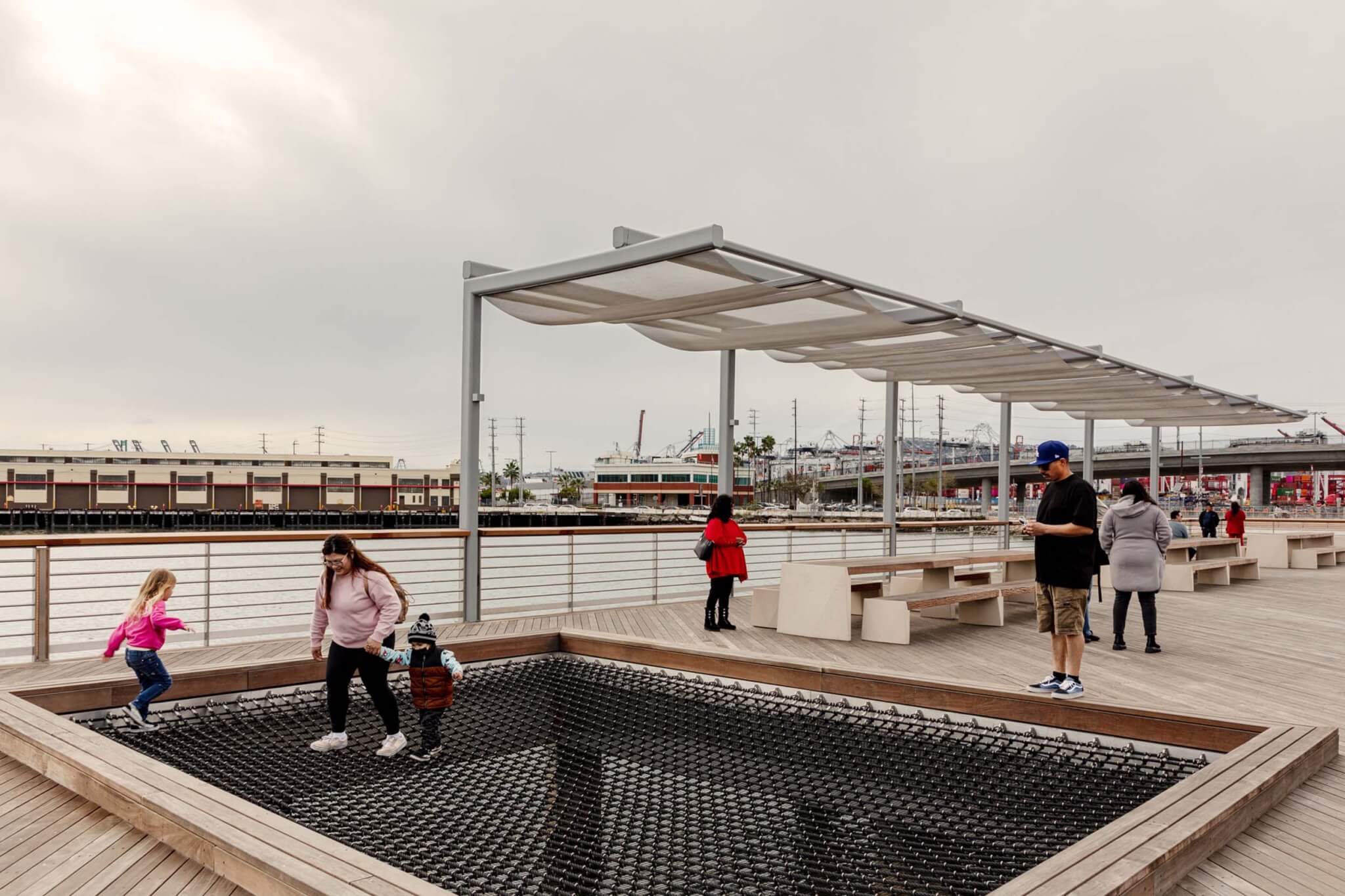
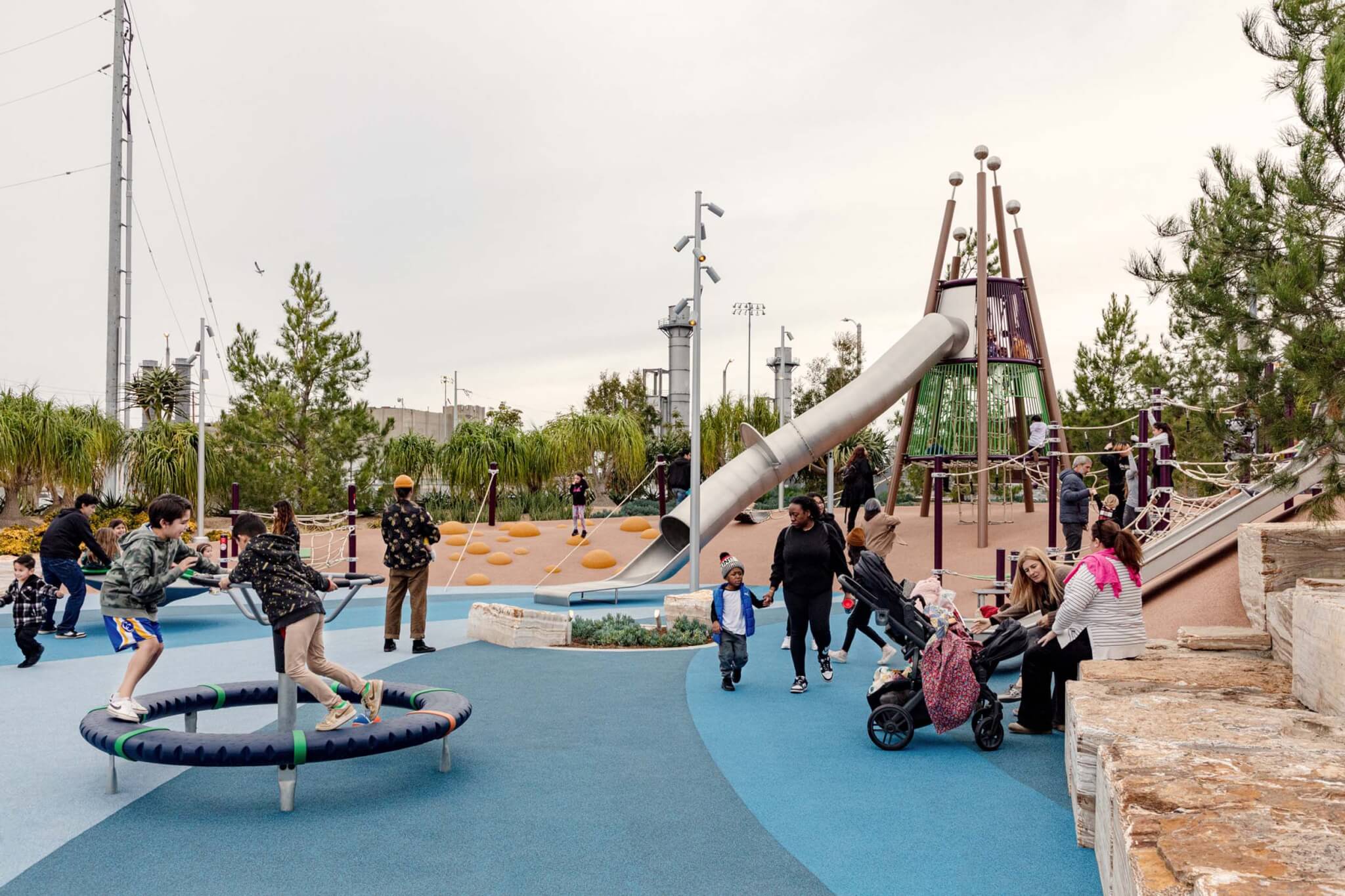
Yet the curious—or perhaps predictable—thing about the promenade is the degree to which it honors the shipping industry that has wreaked havoc on the very community it is designed to serve. The park slopes south toward a row of gantry cranes and the dizzying sea of shipping containers on Terminal Island that obstruct views of the ocean. Most of the seating options run parallel to this sightline, as do the walkways framed by native plants. The steel slide in the children’s playground mimics the steel industrial structures that it foregrounds. And as the water dulls the richly textured blocks of Arizona onyx along the water’s edge, they will, over time, appear to be miniature shipping containers that have washed up ashore. Respite can be found temporarily on a path running parallel to the water on the northern edge of the park. “Visitors are surrounded by lush native planting when they explore this part of the park,” Boisclair said of this section, which includes pink trumpet, Italian stone pine, torrey pine, and palm tree varietals.
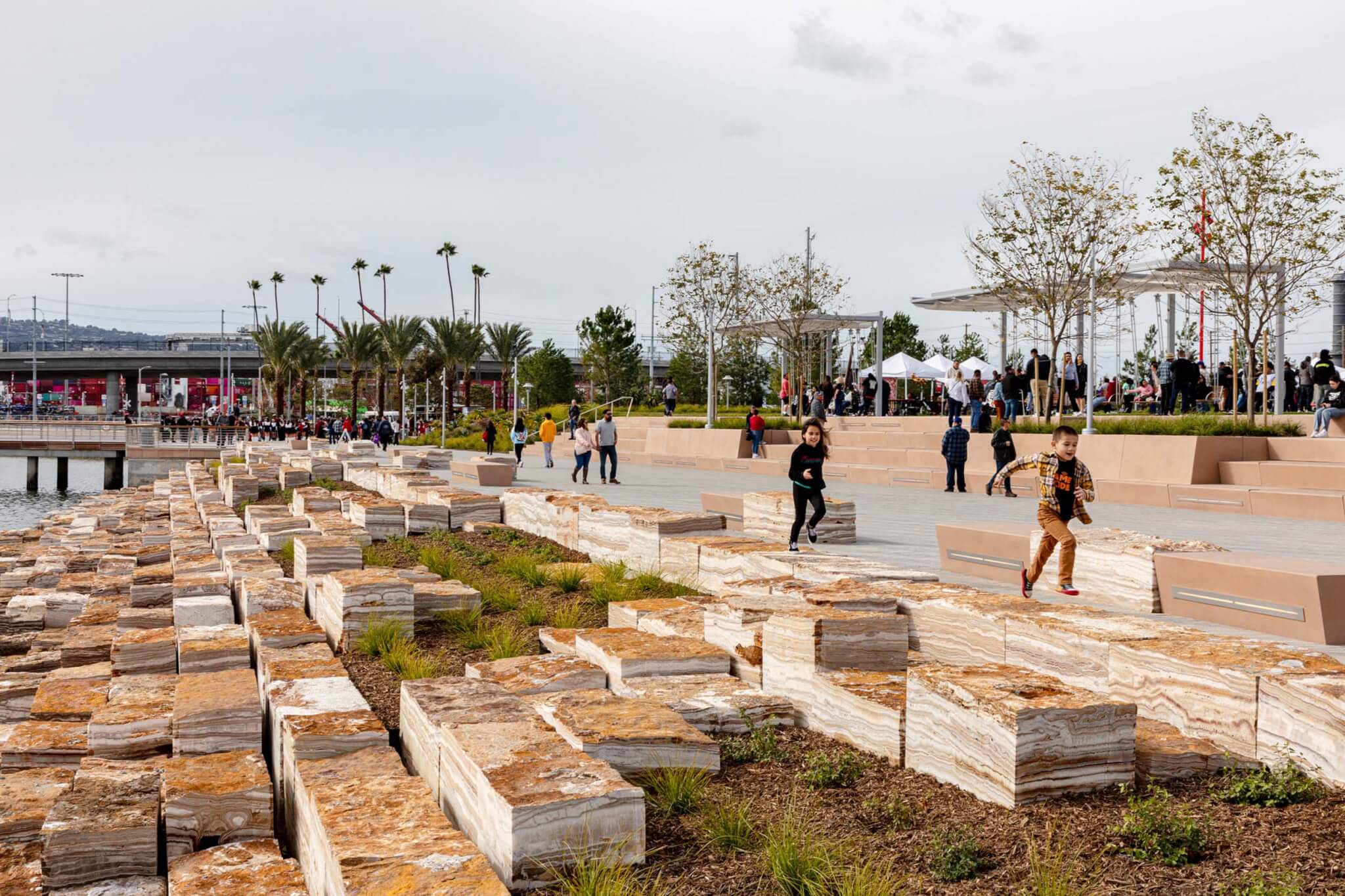
During the opening ceremony, local councilmember Tim McOsker used the horn of a cargo train that was blasting repeatedly throughout his speech as an opportunity to address the apparent concerns of his constituents. “We’ll be adding quiet zones throughout the neighborhood,” said McOsker to some laughter and applause. “Until then, this promenade is the first of many expressions of the community’s presence in Wilmington.” As more Angelenos settle in the area due to increasing home prices in Central Los Angeles, the project additionally signals a major economic transition for the Port; while it redevelops thousands of acres of its previously underused land into spaces for recreation and commerce—with upcoming projects including West Harbor, AltSea, and the Waterfront Connectivity Plan—without signs of slowing down the pace of its original industry, residents may see the patterns of real estate development accelerate the pace of gentrification already taking hold across the South Bay.
Shane Reiner-Roth is a lecturer at the University of Southern California.











